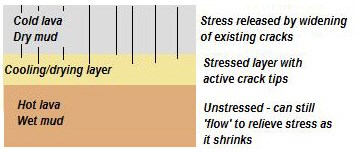Plus my foot is still giving me grief so I am a bit concerned about this. 12 days of hard travelling in demanding terrain - I need to get it performing better. However, we have the time to prep and we will!
Patch did rather well, considering he is 16 yrs old and has stage 4 heart and kidney failure. Just a dry cough presently. This is probably the big factor that will stop us in our tracks going - all depending on his health.
I am swayed toward the GX85 and range of lenses I have as artillery. It's a great travel camera and I have shot all travel image overseas with this. I have 5 lenses with the heaviest being the 100-400mm. However, I am lucky to have a 100-300mm light lens so that will be probably a pick to take. This camera also makes a great street photography camera. Especially with a micro four-thirds process that allows me extra reach in the lens. What you trade off for low light capability you gain by size, weight and versatility. It's just a matter of knowing the tool well and its limitations.
Although we only went to the Organ pipes cause we have other stuff on it has been a wonderful morning to whip up. The Organ Pipes are a unique geological feature for Otago. Otago peninsula was formed entirely by volcanic activity and the tall polygonal columns featured on this walk are remnants of this past. As molten lava cooled slowly beneath the hardened crust, it contracted and formed geometrical cracks which propagated downwards as the mass cooled. Basalt columns form in solidifying lava flows or intrusive dykes or sills. They develop at right angles to the cooling surfaces at the margins of the lava flow or magma. The solidifying rock shrinks and pulls apart forming an irregular network of cracks (“contraction joints”).
 Once each layer of new rock cools to about 750 degrees C, it can’t hold together against the shrinkage stresses. The entire layer suddenly splits apart so that the crack tips advance through to the hot lava below. Each stepwise lengthening of the cracks leaves a small ridge of stone (a “stria”) across the face of the column, showing where the crack tip stopped. The distance apart and alignment of these striae indicate the speed and direction of cooling.
Once each layer of new rock cools to about 750 degrees C, it can’t hold together against the shrinkage stresses. The entire layer suddenly splits apart so that the crack tips advance through to the hot lava below. Each stepwise lengthening of the cracks leaves a small ridge of stone (a “stria”) across the face of the column, showing where the crack tip stopped. The distance apart and alignment of these striae indicate the speed and direction of cooling.Reference Source: https://www.geocaching.com/geocache/GC39JRR_blackhead-basalt-columns-dunedin-otago
The dogs don't really find the downward trip on these stairs easy. So both Jo and I ferry the male dogs down - Although they are not impressed they are pretty ecstatic at the bottom. Molly, on the other hand, seems to have no problems negotiating the stairs. Its a shame they won't join us on this trip.
Hungry for breakfast we near the end of a short but great start to our training for the journey. Jeepers I am going to have to get used to lack of food and still moving forward for this trip. Better amp it up the next month eh! The cold will be a big issue for Jo - she gets cold very easily. Better get her warm game on, and better garments?
Ha - my pack is full of camera gear in this image. And no GX85! So next trip I will take that as well. It's quite obsessive and eccentric to be carrying all camera gear and not much else. The weight of my pack is 21.5kg. I might have to discard this lot for the trip. But none the less I am prepared with the kit to take photos on the training runs if required. Just takes a bit to get it out. If you have any suggestions for camera gear for this trip please let me know in the comments section. Would love to hear your ideas.







No comments:
Post a Comment